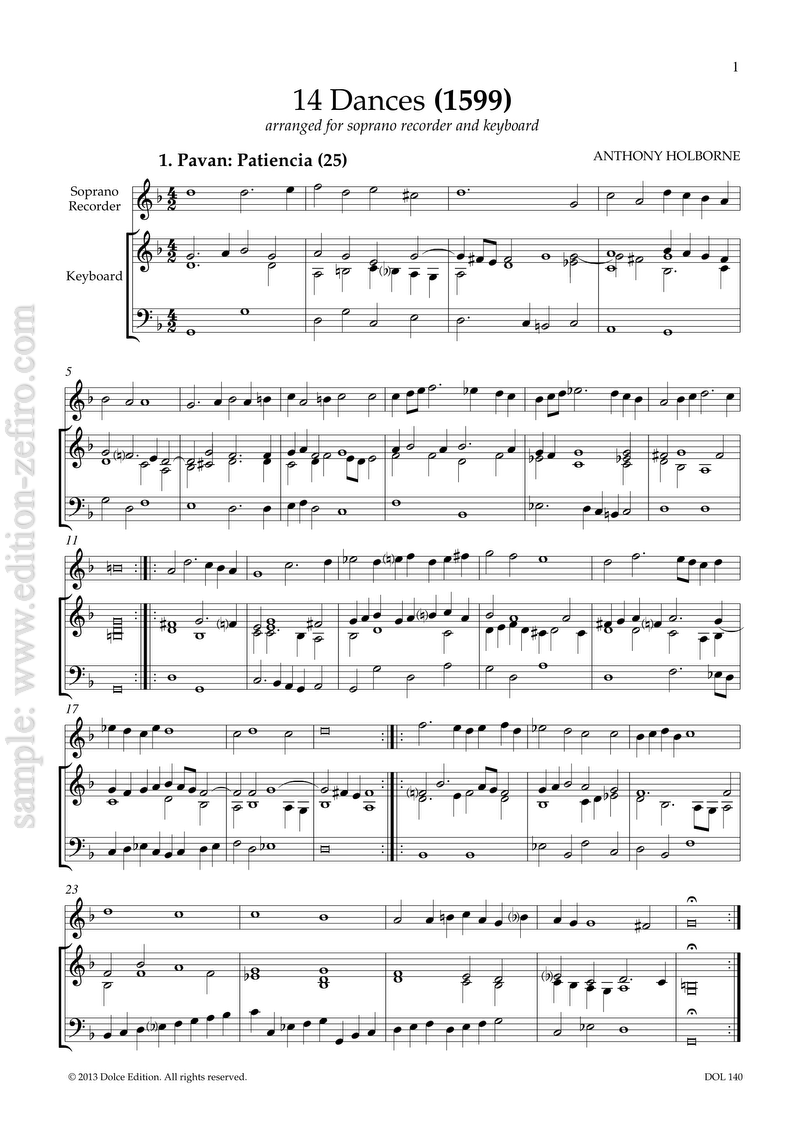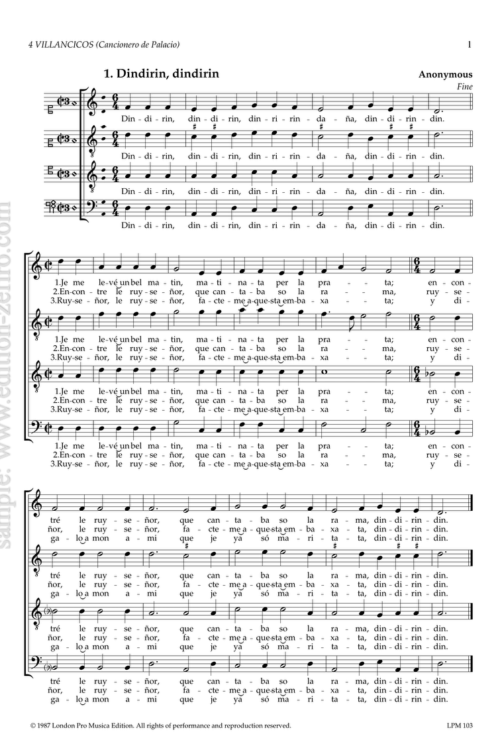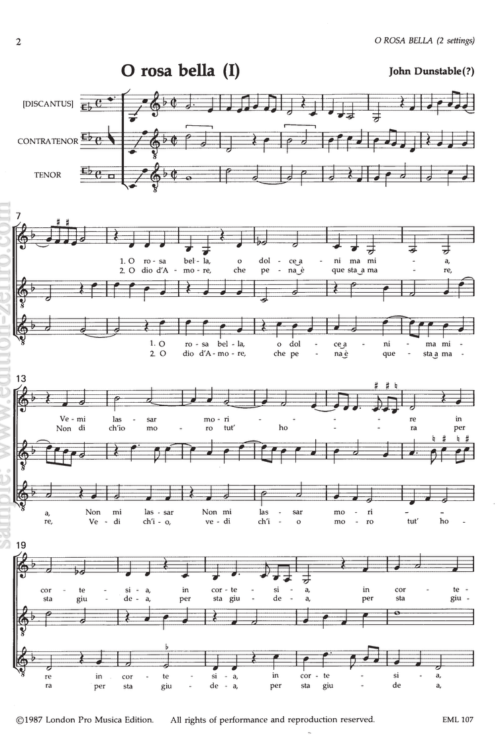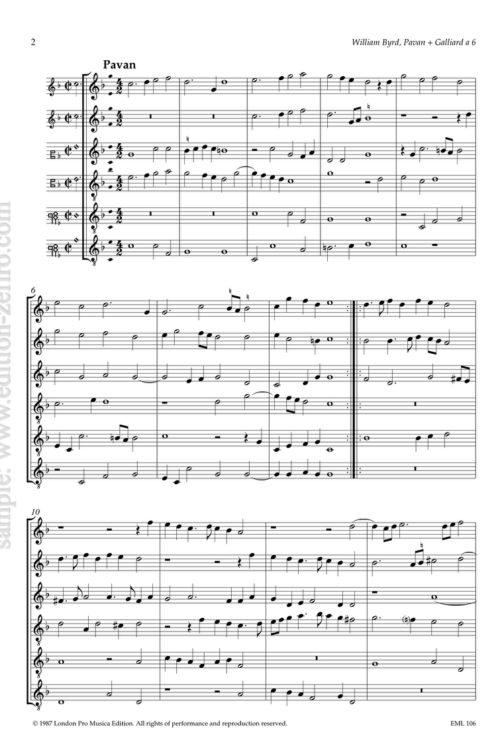Holborne’s melodies are often rather good, so his pieces arrange quite well, in this case for recorder and keyboard.
Anthony Holborne’s Pavans, Galliards and Almains of 1599 contains 63 more or less stylised dances, arranged in five parts. Holborne, like his contemporary John Dowland, was essentially a player of plucked instruments such as the lute and bandora. The partwriting of both these composers is quite different from that of organists such as Byrd and Gibbons; it is much less contrapuntal, and designed to deliver harmony and texture. In Holborne’s case the fourth part (labelled tenor) is quite redundant at times. Often what we find in his music is essentially tune and bass, with impressionistic riffs in the middle of the texture. In other words, his music can be rearranged, as we have done here in these versions for solo recorder and keyboard. Please feel free to adapt these arrangements further to suit your own purpose.
(Bernard Thomas)
- Patiencia (Pavan)
- Ploravit (Pavan)
- Sic semper soleo (Galliard)
- Pavan
- Nowell’s (Galliard)
- Pavan
- Wanton (Galliard)
- The Widowes myte (Galliard)
- The Night Watch (Almaine)
- Almaine
- The Fruit of Love (Almain)
- The Choise (Almaine)
- The Honie-suckle (Almaine)
- The Fairie-round (Galliard)






